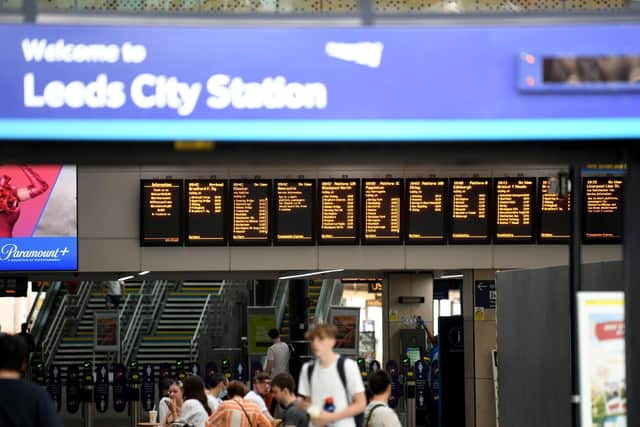Bologna’s public transport network would leave people in Yorkshire green with envy - Bill Carmichael
And although I have had to work hard at a number of things, not least improving my language skills, there has also been enough time to enjoy many of the delights this lovely country has to offer.
For example I am typing this while sitting at a cafe in a shady piazza, watching the regular passeggiata of local families that happens every evening, while sipping on an ice cold negroni. Life could be worse, I suppose.
Advertisement
Hide AdAdvertisement
Hide AdThe passeggiata is one of those striking cultural differences that can puzzle and delight a visitor.


In many small towns and villages in the evening, once the fierce heat of the sun has diminished slightly, it would seem almost the whole neighbourhood emerges for a slow stroll around the piazza, stopping every now and then for an aperitivo or a snack, continually chatting to friends and neighbours.
The kids muck about, as children are want to do, while the “adolescenti” flirt with each other, and friends exchange the latest news. For people, such as myself, who enjoy people watching, it can make for a fascinating evening.
Besides perhaps the church or the pub, we in the UK don’t really have anything similar, and our climate rarely lends itself to such outdoor activities.
Advertisement
Hide AdAdvertisement
Hide AdOne striking architectural feature of Bologna are the porticoes - i portici - that you find on many roads in the historical centre.
There are more than 40 miles of these large, airy colonnades, on one or both sides of the road, and built from the 12th century from stone, brick and wood.
In the burning heat of the summer - in the high 30 degrees this week - these offer shady spaces where you can window shop or stop for a drink, and in the winter, I expect, there is some shelter from the wind and the rain.
It seems they just happened, rather than being constructed as some part of a grand, top-down grand plan, but they are largely private buildings that are used for the public good, and much appreciated. What a brilliant idea.
Advertisement
Hide AdAdvertisement
Hide AdIt is sobering to reflect that much of Bologna was reduced to rubble in the Second World War as the RAF and the USAF bombed the railway marshalling yards of this strategically important city.
But you wouldn’t know it today, as after the war there was a careful and sympathetic programme of restoration and rebuilding. The contrast with British cities such as Coventry, where the mediaeval heart of the city was ripped out and replaced by a hideous sixties shopping centre, is telling.
A lot is said about the state of public transport across Yorkshire, which is need of government investment.
One area of life in Bologna that will make Yorkshire people green with envy is public transport. Like cities of similar size, Sheffield and Leeds, there is no underground railway in Bologna.
Advertisement
Hide AdAdvertisement
Hide AdIf I have understood my friends correctly, the underground geology is not suitable.
Unlike Sheffield, Bologna does not have a tram system either, but there are frequent buses.
But it is the train system that is the star of the show and would put the TransPennine Express to shame.
A return ticket from Bologna to Florence, about 50 miles away, using the modern 186 mph Frecciarossa train, costs about 25 pounds for a return, depending on the time of the day, and takes about 36 minutes.
Advertisement
Hide AdAdvertisement
Hide AdThe last time I travelled from Leeds to Manchester, a shorter distance than the Italian comparison, it was standing room only, cost me the thick end of 40 pounds, and including the inevitable delays took over an hour. And that was on a non-strike day.
And don’t get me started on the even worse journey from Sheffield to Manchester. The less said the better.
I couldn’t help thinking - not for the first time - if our central government invested in public transport in the North as much as in the South East, we would create a much more prosperous and pleasant place to live.
Food is also a revelation in places like Italy. Last night, a delicious pizza, with a mixed salad and a small carafe of local red wine, cost me 12 euros, or just over a tenner.
Advertisement
Hide AdAdvertisement
Hide AdOne final tip. If you visit this lovely city don’t expect to eat “spaghetti bolognese”.
The locals would not know what you were talking about if you asked for it. If they eat pasta with a meat sauce - ragù - it is always with tagliatelle, never, ever spaghetti.